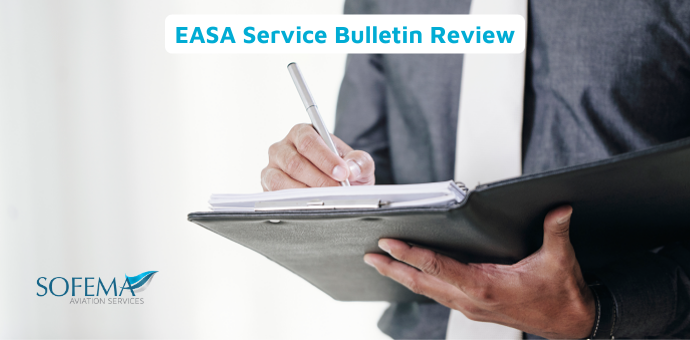Sofema Aviation Services (SAS) considers the need for Service Bulletin & Modification Actions in compliance with AMC4 CAMO.A.305(g) Personnel requirements (ED Decision 2020/002/R) – Related to AMC 20-20 ‘Continuing Structural Integrity Programme’.
Sofema Aviation Services offers the training in support of the understanding regarding the regulatory obligations available at this link
Early Life Airframes
Service Bulletins issued early in the life of an aircraft fleet may utilise inspections (in some cases non-mandatory inspections) alone to maintain structural integrity.
During the early years of an airframe, such inspections may be adequate in this early stage when cracking is possible, but not highly likely.
Later Life Airframes
As aircraft age, the following should be understood:
- The probability of fatigue cracking becomes more likely.
- In this later stage, it is not prudent to rely only on inspections alone because there are more opportunities for cracks to be missed and cracks may no longer occur in isolation.
- In this later stage in the life of a fleet, it is prudent to reduce the reliance strictly on inspections, with its inherent human factors limitations, and incorporate modifications to the structure to eliminate the source of the cracking.
- In some cases reliance on an inspection programme, in lieu of modification, may be acceptable through the increased use of mandatory versus non-mandatory inspections.
Responsibility of the Type Certificate Holder (TCH)
The TCH, in conjunction with operators, is expected to initiate a review of all structurally related inspection and modification SBs and determine which require further actions to ensure continued airworthiness, including mandatory modification action or enforcement of special repetitive inspections.
Actions required include the following:
- Any aircraft primary structural components that would require frequent repeat inspection, or
- Where the inspection is difficult to perform, taking into account the potential airworthiness concern, should be reviewed to preclude the human factors issues associated with repetitive inspections.
SB Review Process
The SB review is an iterative process requiring multiple inspections and consisting of the following items:
- The TCH should review all issued structural inspection – and modification SBs to select candidate bulletins, using the following 4 criteria:
o There is a high probability that structural cracking exists.
o Potential structural airworthiness concern.
o Damage is difficult to detect during routine maintenance.
o There is Adjacent Structural damage or the potential for it.
SB Review Methodology
May be done by the TCH alone or in conjunction with the operators at a preliminary Structural Task Group (STG) meeting.
The TCH and operator members will be requested to submit information on individual fleet experience relating to candidate SBs.
- Note – This is in part operator feedback following inspection findings during aircraft inspection tasks – how does this reporting system function in your organisation?
The information is then collected and evaluated by the TCH and reviewed in detail during STG Meetings.
Final Selection Made during STG Meeting:
- Will be made during an STG meeting by the voting members of the STG, either by consensus or majority vote, depending on the preference of the individual STGs.
- An assessment will be made by the TCH as to whether or not any subsequent revisions to SBs affect the previous decision made.
- Any subsequent revisions to SBs previously chosen by the STG for mandatory inspection or incorporation of modification action that would affect the previous STG recommended action should be submitted to the STG for review.
- The TCH should review all new structural SBs periodically to select further candidate bulletins.
- The TCH should schedule a meeting of the STG to address the candidates.
Communication with the Operator (CAMO)
- Operator members and the competent authority will be advised of the candidate selection and provided the opportunity to submit additional candidates.
Next Steps
Follow this link to our Library to find & Download related documents for Free.
Please see the following related to Part CAMO Transition Support – https://sassofia.com/download-area/#part-camo-transition-support
For additional questions or to register for training please email team@sassofia.com
Tags:
EASA, SBs, Service Bulletins, Type Certificate Holder, Regulatory Compliance, Part CAMO, SAS training, Webinar training, Regulatory Authority, AMC 20-20, Structural Task Group




